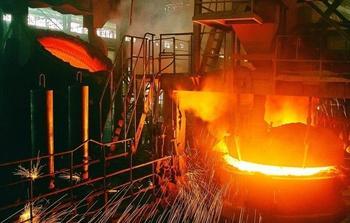
At present, the Ministry of Industry and Information Technology is reviewing the second batch of companies that meet the “Steel Industry Specification Requirements†and is expected to be completed by the end of November, when more steel mills will be included in the assessment “black and white listâ€.
It is worth noting that the Ministry of Industry and Information Technology will conduct on-site inspections and other methods for some companies. The review will continue to increase. Once companies enter the "blacklist," they will face differential electricity prices, bank credit tightening, and administrative accountability.
“This year, 45 companies, accounting for 41.4% of the existing capacity, including Baosteel, Shougang, Shagang and other steel industries. We plan to organize a group of companies to review next year to strive to bring 80% of existing capacity into the scope of standardized management.†An internal meeting convened recently told reporters from the "Economic Information Daily". He further stated that the Ministry of Industry and Information Technology will cooperate with the AQSIQ, the Ministry of Environmental Protection, and the National Development and Reform Commission and other relevant departments to support enterprises that meet the specifications (white list), in particular, cross-regional cross-ownership enterprises and regional mergers and reorganizations, and technological transformation of enterprises. Policies are given to encourage the optimization of industrial structure and regional layout; for companies that do not meet the specifications (blacklist), will adopt differential pricing, credit tightening and other economic measures, energy conservation and environmental protection and other legal constraints, and administrative accountability and other measures, gradually Compress its living space and force companies to exit the steel industry.
In fact, many departments have brewed and introduced various measures to deal with excess capacity since the beginning of this year, and the “bearing the brunt of the†is the suffering steel industry. China Iron and Steel Association statistics show that at the end of 2012, the actual integrated domestic steel production capacity was about 976 million tons, according to a statistical crude steel production of 731 million tons, and the capacity utilization rate was 74.9%.
An industry insider estimates to reporters that the domestic steel production capacity has actually surpassed 1 billion tons in the absence of comprehensive statistics. What is even more worrying is that at the end of this year, more than 20 million tons of crude steel capacity will be put into production.
According to the latest data from China Iron and Steel Association, in the first half of the year, the industry's output of crude steel was 390 million tons, an increase of 7.4% compared with the same period of last year; crude steel production reached 2.154 million tons per day. Based on this, the annual crude steel production will reach 786 million tons. In the context of weak market demand, “high output†not only drives up raw material costs, but also brings about vicious competition in the steel industry, steel prices continue to decline, and the industry’s loss is expanding. In the first half of this year, among the large and medium-sized steel companies that were included in the statistics of the Steel Association, there were 35 accumulated loss-making enterprises with losses up to 40.7%, and the top 10 companies suffered losses totaling 9.125 billion yuan. In the first half of the year, the sales margin of the steel industry was only 0.13%, which was far lower than the average sales profit rate of industrial enterprises above designated size of 5.4%.
“The country’s determination this year is great, and many heavy industry industries, including the steel industry, are facing the predicament of vicious competition and widespread loss. A force mechanism has been formed, and excess capacity has reached an unstoppable level.†The person in charge of the iron and steel company who disclosed the name indicated to the reporter of the "Economic Information Daily".
The reporter learned that many ministries and commissions will supervise overcapacity policies in the second half of the year. The National Development and Reform Commission issued a document stating that in the second half of this year, while resolutely curbing the blind expansion of industries with serious overcapacity, it will follow the principle of “respecting laws, pursuing policies, multi-pronged approach, and tackling both risks and problems†to steel, cement, electrolytic aluminum, and flat plates. Glass, shipping and other industries will be the focus and policies and measures to eliminate overcapacity will be issued. In addition, the "Air Pollution Prevention and Control Action Plan" led by the Ministry of Environmental Protection will also be formally introduced in August, in which "controlling emissions" has become an important measure to control air pollution, and the next step are steel, cement, flat glass, alumina and other two high-quality Industrial emission standards and monitoring will be more stringent.
It is worth noting that after the Ministry of Industry and Information Technology announced on April 2 the first batch of 45 companies that met the "Code for Steel Industry Regulations", on July 25, the list of 19 industries that eliminated backward production capacity, including steel, was announced. According to sources from the Ministry of Industry and Information Technology, the Ministry of Industry and Information Technology and the National Development and Reform Commission are currently working together to formulate an “Overall Plan to Overcome the Contradiction of Overcapacity,†in an effort to promote the merger and reorganization of enterprises, and to integrate and compress a batch of excess capacity; encourage local standards to be increased, and implement a capacity reduction and replacement system. Eliminating a batch of backward production capacity.